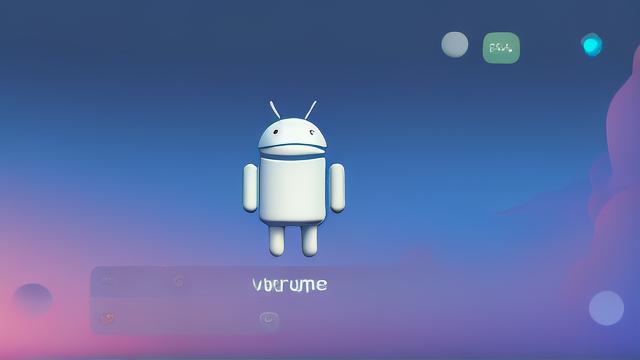Android实现视频弹幕功能,可以通过自定义View和Canvas绘制文字,结合MediaPlayer控制视频播放。
Android实现视频弹幕功能
一、准备工作

1、视频文件准备:准备好你想要播放的视频文件,并将其放置于res/raw目录下。
2、横屏播放设置:为了获得更好的观看体验,通常将视频设置为横屏播放,在AndroidManifest.xml中配置如下:
<activity android:name=".MainActivity"
android:configChanges="keyboardHidden|orientation|screenLayout|screenSize"
android:screenOrientation="landscape">
<intent-filter>
<action android:name="android.intent.action.MAIN" />
<category android:name="android.intent.category.LAUNCHER" />
</intent-filter>
</activity>3、引入DanmakuFlameMaster库:使用哔哩哔哩开源的弹幕效果库DanmakuFlameMaster,在你的build.gradle文件中添加依赖:
dependencies {
implementation 'com.github.ctiao:DanmakuFlameMaster:0.9.25'
}二、布局设计
使用RelativeLayout作为主布局,包含VideoView用于视频播放,DanmakuView用于显示弹幕,以及一个底部操作栏(包含EditText和发送按钮)用于输入和发送弹幕。
<RelativeLayout xmlns:android="http://schemas.android.com/apk/res/android"
android:layout_width="match_parent"
android:layout_height="match_parent"
android:background="#000000">
<VideoView
android:id="@+id/video_view"
android:layout_width="match_parent"
android:layout_height="match_parent"
android:layout_centerInParent="true"/>
<master.flame.danmaku.ui.widget.DanmakuView
android:id="@+id/danmaku_view"
android:layout_width="match_parent"
android:layout_height="match_parent"/>
<LinearLayout
android:id="@+id/operate_layout"
android:layout_width="match_parent"
android:layout_height="50dp"
android:layout_alignParentBottom="true"
android:visibility="gone">
<EditText
android:id="@+id/edit"
android:layout_width="0dp"
android:layout_height="match_parent"
android:layout_weight="1"
android:layout_marginLeft="50dp"
android:textColor="#ffffff"
android:imeOptions="flagNoExtractUi"/>
<Button
android:layout_width="wrap_content"
android:layout_height="match_parent"
android:id="@+id/send"
android:textSize="20sp"
android:background="#00000000"
android:textColor="#ffffff"
android:text="发送"/>
</LinearLayout>
</RelativeLayout>三、核心代码实现
1、初始化DanmakuView:创建并配置DanmakuView实例。
DanmakuView danmakuView = findViewById(R.id.danmaku_view); // 创建DanmakuContext对象 DanmakuContext danmakuContext = DanmakuContext.create(); // 创建BaseDanmakuParser对象 BaseDanmakuParser parser = new BaseDanmakuParser(); // 准备弹幕视图 danmakuView.prepare(parser, danmakuContext); danmakuView.start(); // 开始显示弹幕
2、发送弹幕:当用户点击发送按钮时,获取输入框中的文本并添加到弹幕列表中。
Button sendButton = findViewById(R.id.send);
EditText editText = findViewById(R.id.edit);
sendButton.setOnClickListener(new View.OnClickListener() {
@Override
public void onClick(View v) {
String text = editText.getText().toString();
if (!TextUtils.isEmpty(text)) {
// 创建一个新的弹幕对象并添加到播放器中
IDanmakus danmakus = danmakuContext.mDanmakus;
long currTime = danmakuContext.mDanmakuTimer.currMillisecond;
DanmakuTimer timer = new DanmakuTimer(currTime);
BaseDanmaku danmaku = factory.createDanmaku(danmakus.size());
danmaku.setTimer(timer);
danmakus.add(danmaku);
danmakuView.prepare(parser, danmaku);
danmakuView.start(); // 重新准备并开始显示弹幕
editText.setText(""); // 清空输入框
}
}
});3、资源释放:在Activity的onPause、onResume和onDestroy方法中执行必要的操作以确保资源得到正确释放。

@Override
protected void onPause() {
super.onPause();
danmakuView.pause(); // 暂停弹幕显示
}
@Override
protected void onResume() {
super.onResume();
danmakuView.resume(); // 恢复弹幕显示
}
@Override
protected void onDestroy() {
super.onDestroy();
danmakuView.release(); // 释放弹幕资源
}通过以上步骤,你就可以在Android应用中实现一个简单的视频弹幕功能了,这个示例只是一个基础版本,你可以根据需要进一步扩展和完善功能。
以上内容就是解答有关“Android实现视频弹幕功能”的详细内容了,我相信这篇文章可以为您解决一些疑惑,有任何问题欢迎留言反馈,谢谢阅读。